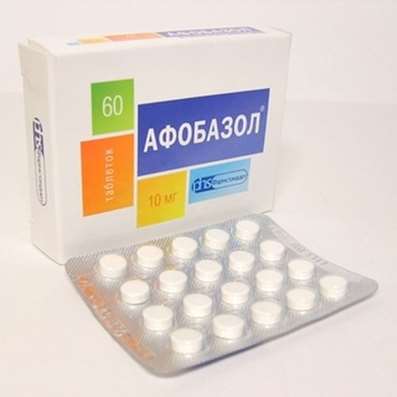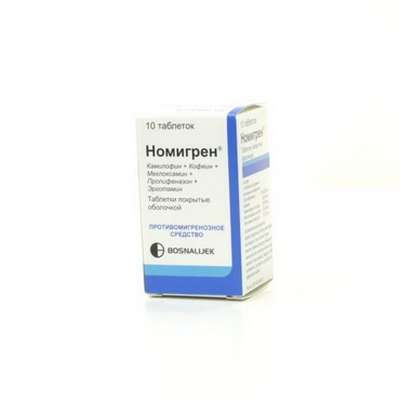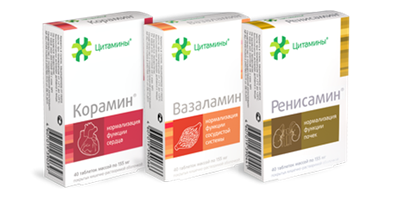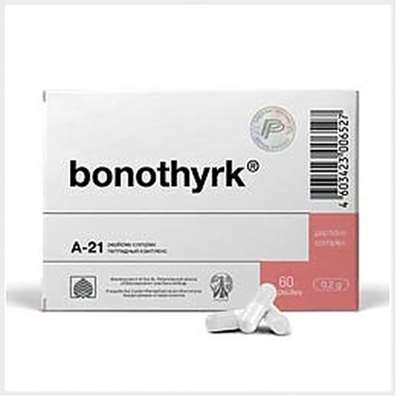Instruction for use: Zyrtec
I want this, give me price
Dosage form: Drops for oral administration; Film-coated tablets
Active substance: Cetirizine
ATX
R06AE07 Cetirizine
Pharmacological groups:
H1-antihistamines
The nosological classification (ICD-10)
H04.9 Illness of lacrimal apparatus, unspecified: Insufficient production of tear fluid; Insufficient lacrimation; Red eye syndrome; Lachrymation; Dryness of the anterior surface of the eye
H10.1 Acute atopic conjunctivitis: Allergic conjunctivitis; Allergic eye diseases; Allergic conjunctivitis; Allergic conjunctivitis caused by chemical and physical factors; Allergic rhinoconjunctivitis; Allergic inflammation of the eyes; Spring Qatar; Spring keratitis; Spring conjunctivitis; Conjunctivitis allergic; Year-round allergic conjunctivitis; Exacerbation of pollinosis in the form of rhinoconjunctival syndrome; Acute allergic keratoconjunctivitis; Acute allergic conjunctivitis; Superficial bacterial infection of the eyes; Rhinoconjunctivitis; Seasonal allergic conjunctivitis; Seasonal conjunctivitis; SENSORY; Chronic allergic keratoconjunctivitis; Chronic allergic conjunctivitis
H11.4 Other conjunctival vascular diseases and cysts: Edema of the conjunctiva; Secondary hyperemia of the eye; Hyperemia of the conjunctiva; Hyperemia of the membranes of the eye
J00 Acute nasopharyngitis [rhinitis]: Viral rhinitis;Inflammation of the nasopharynx; Inflammatory Nose Disease; Purulent rhinitis; Nasal congestion; Nasal congestion due to cold and flu; Difficulty with nasal breathing; Difficulty with nasal breathing for colds; Difficult nasal breathing; Difficult nasal breathing for colds; Nasal hypersecretion; Coryza; ARI with phenomena of rhinitis; Acute rhinitis; Acute rhinitis of various origins; Acute rhinitis with thick purulent-mucous exudate; Acute rhinopharyngitis; Edema of the mucous membrane of the nasopharynx; Rhinitis; Rhinorrhea; Infectious-inflammatory disease of ENT organs;Severe cold; Rhinopharyngitis
J30 Vasomotor and allergic rhinitis: Allergic rhinopathy; Allergic rhinosinusopathy; Allergic diseases of the upper respiratory tract; Allergic rhinitis; Allergic rhinitis seasonal; Vasomotor runny nose; Prolonged allergic rhinitis; All-year-round allergic rhinitis; All-year allergic rhinitis; Year-round or seasonal allergic rhinitis; All-the-year-round rhinitis of an allergic nature; Rhinitis vasomotor allergic; Exacerbation of pollinosis in the form of rhinoconjunctival syndrome; Acute allergic rhinitis; Edema of the nasal mucosa; Edema of the nasal mucosa; Edema of the mucous membrane of the nasal cavity; Swelling of the nasal mucosa; Swelling of the nasal mucosa; Pollinosis; Permanent allergic rhinitis; Rhinoconjunctivitis; Rhinosinusitis; Rhinosinusopathy; Seasonal allergic rhinitis; Seasonal allergic rhinitis; Hay rhinitis; Chronic allergic rhinitis; Allergic diseases of the respiratory tract
J30.1 Allergic rhinitis caused by pollen of plants: Hay fever; Hay fungus; hay fever; Hypersensitivity to pollen of plants; Polyposis allergic rhinosinusitis; Seasonal pollinosis; Seasonal rhinitis
J30.2 Other seasonal allergic rhinitis: Allergic rhinitis seasonal; Seasonal rhinitis of an allergic nature
J30.3 Other allergic rhinitis: Allergic rhinitis year-round; Allergic rhinoconjunctivitis
L20 Atopic dermatitis: Allergic diseases of the skin; Allergic skin disease noninfectious etiology; Allergic skin disease etiology nemikrobnoy; Allergic skin diseases; Allergic skin lesions; Allergic reactions on the skin; atopic dermatitis; Allergic dermatosis; Allergic diathesis; Allergic itching dermatosis; Allergic skin disease; Allergic skin irritation; allergic Dermatitis; atopic Dermatitis; allergic dermatoses; exudative diathesis; Itchy atopic eczema Itchy allergic dermatosis; Allergic skin disease; Cutaneous allergic reaction to drugs and chemicals; Cutaneous reactions to medications; Skin and allergic disease; Acute eczema; common neurodermatitis; Chronic atopic dermatitis; Exudative diathesis
L29 Itching: Itching with partial obstruction of the biliary tract; Dermatitis itchy; Dermatosis with persistent itching; Other itching dermatoses; Itching dermatoses; Itching allergic dermatosis; Itching dermatitis; Itching dermatosis; Itching itch; Excruciating itching; Severe itching; Endogenous itching; Skin itching with dermatosis; Restricted itchy dermatitis; Itching of the skin; Itchy scalp; Itching eczema
L29.9 Itching, unspecified: Itching eczema; Severe itching; Dermal itching caused by venous insufficiency; Itchy scalp; Prurit
L50 Urticaria: Idiopathic chronic urticarial; Injury Urticaria; Chronic urticarial; Hives of the newborn
R06.7 Sneezing: Sneezing
R21 Rash and other nonspecific skin rashes: Skin rash; Skin and mucous eruptions; Skin rashes; Drug rash; Medicinal rash fixed; Dry skin rashes; Rash; Toxidermy; Toxicoderma; Toxic rash; Korepodobnye rashes from drugs; Macular Papular Eruptions; Drug-induced rash
Composition
Tablets, coated with a film membrane 1 tab.
active substance: Cetirizine dihydrochloride 10 mg
Auxiliary substances: MCC - 37 mg; Lactose monohydrate - 66.4 mg; Silicon dioxide colloidal - 0.6 mg; Magnesium stearate - 1.25 mg;
Film membrane: Opadry® Y-1-7000 (hypromellose (E464) - 2.156 mg, titanium dioxide (E171) - 1.078 mg, macrogol 400 - 0.216 mg) - 3.45 mg
Drops for oral administration 1 ml
active substance: Cetirizine hydrochloride 10 mg
Auxiliary substances: glycerol 250 mg; Propylene glycol 350 mg; Sodium saccharinate - 10 mg; Methylparabenzene - 1.35 mg; Propyl parabenzene 0.15 mg; Sodium acetate - 10 mg; Glacial acetic acid - 0.53 mg; Purified water - up to 1 ml
Description of dosage form
Tablets: white oblong, film-coated, with biconvex surfaces, one-sided risk and engraved "Y" on both sides of the risks.
Drops: transparent colorless liquid with the smell of acetic acid.
Pharmachologic effect
Mode of action - anti-allergic, antihistamine.
Pharmacodynamics
Cetirizine, the active substance of Zyrtek®, is a metabolite of hydroxyzine, belongs to the group of competitive histamine antagonists and blocks H1-histamine receptors.
Cetirizine prevents development and facilitates the course of allergic reactions, has antipruritic and antiexudative actions. Cetirizine affects the early histamine-dependent stage of allergic reactions, limits the release of inflammatory mediators in the late stage of the allergic reaction, and also reduces the migration of eosinophils, neutrophils and basophils, and stabilizes the membranes of mast cells. Reduces the permeability of capillaries, prevents the development of edema of tissues, relieves spasm of smooth muscles. Eliminates the skin reaction to the administration of histamine, specific allergens, as well as cooling (with cold urticaria). Reduces histamine-induced bronchoconstriction in bronchial asthma of the lung course.
Cetirizine has no anticholinergic and antiserotonin effect. In therapeutic doses the preparation practically does not cause a sedative effect. After receiving cetirizine in a single dose of 10 mg, its effect develops in 20 minutes (in 50% of patients), after 60 minutes (in 95% of patients) and lasts more than 24 hours. Against the background of course treatment, tolerance to antihistamine effect of cetirizine does not develop. After the abolition of therapy, the effect lasts up to 3 days.
Pharmacokinetics
The pharmacokinetic parameters of cetirizine vary linearly.
Suction. After ingestion, the drug is quickly and completely absorbed from the digestive tract. The intake of food does not affect the completeness of absorption, although its rate decreases. In adults, after a single dose of the drug in a therapeutic dose of Cmax in blood plasma is 300 ng / ml and is achieved through (1 ± 0.5) h.
Distribution. Cetirizine (93 ± 0.3)% binds to plasma proteins. Vd is 0.5 l / kg. When taking the drug at a dose of 10 mg for 10 days cumulation of cetirizine is not observed.
Metabolism. In small amounts, it is metabolized in the body by O-dealkylation (unlike other antagonists of H1-histamine receptors, which are metabolized in the liver by the cytochrome system) to form a pharmacologically inactive metabolite.
Excretion. In adults, T1 / 2 is approximately 10 hours; In children from 6 to 12 years - 6 hours, from 2 to 6 years - 5 hours, from 6 months to 2 years - 3.1 hours. About 2/3 of the accepted dose of the drug is excreted by the kidneys in unchanged form.
In elderly patients and patients with chronic liver disease, a single dose of 10 mg of T1 / 2 is increased by approximately 50%, and systemic clearance is reduced by 40%.
In patients with mild renal insufficiency (Cl creatinine> 40 ml / min) pharmacokinetic parameters are similar to those in patients with normal renal function.
In patients with moderate renal insufficiency and in patients on hemodialysis (Cl creatinine <7 ml / min), when taking the drug inside at a dose of 10 mg T1 / 2 is 3 times longer, and the total clearance is reduced by 70% relative to these Parameters in patients with normal renal function, which requires a corresponding change in the dosing regimen.
Cetirizine is practically not removed from the body during hemodialysis.
Indication of the Zyrtek
Treatment of symptoms of year-round and seasonal allergic rhinitis and allergic conjunctivitis (such as itching, sneezing, nasal congestion, rhinorrhea, lacrimation, congestion hyperemia);
Hay fever (hay fever);
hives;
Allergic dermatoses, incl. Atopic dermatitis, accompanied by itching and rashes.
Contraindications
For all dosage forms
Hypersensitivity to cetirizine, hydroxyzine or piperazine derivative, as well as other components of the drug;
Terminal stage of renal failure (Cl creatinine <10 ml / min)
pregnancy;
The period of breastfeeding.
With caution: chronic renal failure (with Cl creatinine> 10 ml / min, dosage adjustment is required); Elderly age (glomerular filtration may be reduced); Epilepsy and patients with increased convulsive readiness; Patients with predisposing factors to urinary retention (see "Special instructions").
For tablets coated with a film sheath, in addition:
Hereditary intolerance to galactose, a lack of lactase or a syndrome of glucose-galactose malabsorption;
Children's age till 6 years.
For drops additionally:
Children's age to 6 months (due to limited data on the effectiveness and safety of drugs).
With caution: children under 1 year.
Application in pregnancy and breastfeeding
Experimental studies in animals did not reveal any direct or indirect adverse effects of cetirizine on the developing fetus (including in the postnatal period), the course of pregnancy and childbirth also did not change.
Adequate and strictly controlled clinical trials on the safety of the drug have not been carried out, therefore, Zyrtek® should not be prescribed during pregnancy.
Cetirizine excreted in breast milk, so the treating doctor should decide on the termination of feeding for the period of application of the drug.
Side effects
Possible side effects are given below for the body systems and the frequency of occurrence: very often (≥1 / 10); Often (≥1 / 100, <1/10); Infrequently (≥1 / 1000, <1/100); Rarely (≥1 / 10000, <1/1000); Very rarely (<1/10000); Frequency is unknown (due to insufficient data).
From the immune system: rarely - hypersensitivity reactions; Very rarely anaphylactic shock.
From the nervous system: often - headache, fatigue, dizziness, drowsiness; Infrequently paresthesia; Rarely convulsions; Very rarely - perversion of taste, dyskinesia, dystonia, fainting, tremor, tick; Frequency unknown - memory impairment, incl. amnesia.
Psychiatric disorders: infrequent excitation; Rarely - aggression, confusion of creation, depression, hallucinations, sleep disturbance; Frequency is unknown - suicidal ideation.
From the side of the organ of vision: very rarely - a violation of accommodation, blurred vision, nystagmus.
From the side of the hearing organ: the frequency is unknown - vertigo.
From the digestive system: often - dry mouth, nausea; Infrequently - diarrhea, abdominal pain.
From the CVS: rarely - tachycardia.
From the respiratory system: often - rhinitis, pharyngitis.
From the side of metabolism: rarely - weight gain.
From the urinary system: very rarely - dysuria, enuresis; Frequency unknown - urinary retention.
On the part of laboratory indicators: rarely - a change in functional liver samples (increased activity of hepatic transaminases, alkaline phosphatase, GGT, and bilirubin concentrations); Very rarely - thrombocytopenia.
From the skin: infrequent - rash, itching; Rarely - hives; Very rarely - angioedema, persistent erythema.
General disorders: infrequent - asthenia, malaise; Rarely - peripheral edema; Frequency unknown - increased appetite.
Interaction
When studying the drug interaction of cetirizine with pseudoephedrine, cimetidine, ketoconazole, erythromycin, azithromycin, diazepam, glipizide and antipyrin, clinically significant undesirable interactions have not been identified.
With simultaneous application with theophylline (400 mg / day), the total clearance of cetirizine is reduced by 16% (theophylline kinetics does not change).
With concomitant use with ritonavir, AUC of cetirizine increased by 40%, while that of ritonavir slightly changed (-11%).
With simultaneous application with macrolides (azithromycin, erythromycin) and ketoconazole, there were no changes on the ECG.
When using the drug in therapeutic doses, no data were obtained on the interaction with alcohol (at a blood alcohol concentration of 0.5 g / l). Nevertheless, one should refrain from drinking alcohol during therapy with the drug in order to avoid CNS depression.
Prior to the appointment of allergological samples, a three-day "wash-out" period is recommended because H1-histamine receptors blockers inhibit the development of skin allergic reactions.
Dosing and Administration
Inside.
Children older than 6 years and adults: the initial dose is 5 mg (1/2 table or 10 drops) once a day, if necessary, can be increased to 10 mg (1 table or 20 drops) once a day. Sometimes an initial dose of 5 mg (1/2 table or 10 drops) may be sufficient to achieve a therapeutic effect. The daily dose is 10 mg (1 table or 20 drops).
Children from 6 to 12 months: 2.5 mg (5 drops) 1 time per day.
Children from 1 to 2 years: 2.5 mg (5 drops) up to 2 times a day.
Children from 2 to 6 years: 2.5 mg (5 drops) 2 times a day or 5 mg (10 drops) once a day.
Patients with renal insufficiency, the dose decreases depending on the creatinine clearance: with Cl creatinine 30-49 ml / min - 5 mg 1 time per day, at 10-29 ml / min - 5 mg every other day.
Since Zyrtek® is excreted from the body by the kidneys, when administered to patients with renal insufficiency and elderly patients, the dose should be adjusted depending on the amount of creatinine clearance. The creatinine clearance for men can be calculated based on the serum creatinine concentration, according to the following formula:
Cl creatinine, ml / min
The creatinine clearance for women can be calculated by multiplying the obtained value by a factor of 0.85.
| Renal insufficiency | Cl creatinine, ml / min | Dosing regimen |
| Missing (norm) | ≥80 | 10 mg / day |
| Lightweight | 50–79 | 10 mg / day |
| Average | 30–49 | 5 mg / day |
| Heavy | 10–29 | 5 mg every other day |
| Terminal stage - patients on hemodialysis | <10 | The drug is contraindicated |
Adult patients with renal and hepatic insufficiency dosing is carried out according to the table given above.
Children with renal insufficiency, the dose is adjusted taking into account the clearance of creatinine and body weight.
Patients with a violation of only liver function correction of the dosing regimen is not required.
Overdose
Symptoms (when taking the drug once in a dose of 50 mg): confusion, diarrhea, dizziness, fatigue, headache, malaise, mydriasis, itching, weakness, anxiety, sedation, drowsiness, stupor, tachycardia, tremor, urinary retention.
Treatment: immediately after taking the drug - gastric lavage or induction of vomiting. It is recommended the appointment of activated charcoal, the conduct of symptomatic and maintenance therapy. There is no specific antidote. Hemodialysis is ineffective.
Special instructions
For all dosage forms
Care should be taken in patients with spinal cord injury, prostatic hyperplasia, and other predisposing factors to urinary retention. Cetirizine may increase the risk of urinary retention.
It is recommended to refrain from drinking alcohol (see "Interaction").
Influence on the ability to drive vehicles and work with machinery. With an objective assessment of the ability to drive vehicles and manage mechanisms, there were no undesirable events when taking the drug at the recommended dose. But nevertheless, during the period of taking the drug, it is advisable to refrain from engaging in potentially dangerous activities that require an increased concentration of attention and speed of psychomotor reactions.
For drops for oral administration additionally:
In view of the potential depressive effect on the central nervous system, care should be taken when prescribing Zyrtek® to children under 1 year of age, with the following risk factors for sudden child death syndrome, such as, but not limited to,:
- sleep apnea syndrome or sudden infant death syndrome in infants from a brother or sister;
- abuse of the mother of drugs or smoking during pregnancy;
- young mother's age (19 years and younger);
- Abuse of smoking babysitter, caring for a child (one pack of cigarettes a day or more);
- children who fall asleep face down on a regular basis and who are not placed on their backs;
- premature (gestational age less than 37 weeks) or those born with insufficient body weight (below the 10th percentile of gestational age) children;
- with the joint administration of drugs that have a depressing effect on the central nervous system.
The composition of the drug includes the methylparabenzene and propyl parabenzol auxiliary substances, which can cause allergic reactions, incl. Delayed type.
Release form
Tablets, film-coated, 10 mg. In the outline cell packaging (blister of PVC / aluminum foil), 7 or 10 pcs. By 1 (7 or 10 tab.) Or 2 (10 tab.) Blisters in a cardboard bundle.
Drops for oral administration, 10 mg / ml. In bottles of dark glass (type 3), sealed with PE cover, equipped with a system of protection from children, 10 or 20 ml. The bottle is equipped with a lid-dropper made of white LDPE. 1 fl. In a cardboard box.
Manufacturer
Tablets, film-coated, 10 mg. FSB Farshim S.A. Industrial zone of Planshee, Schmene de Croix Blanche 10, CH-1630 Boulle, Switzerland.
Drops for oral administration, 10 mg / ml. Eisika Pharmaceuticals Srl Via Pralaya 15, 10044 Pianezza (Turin), Italy.
The owner of the registration certificate: YUSB Farshim SA. Industrial zone of Planshee, Schmene de Croix Blanche 10, CH-1630 Boulle, Switzerland.
Conditions of leave from pharmacies
Without recipe.
Storage conditions of the drug Zyrtec
At a temperature not higher than 25 ° C.
Keep out of the reach of children.
Shelf life of the drug Zyrtec
5 years.
Do not use after the expiry date printed on the package.

 Cart
Cart





